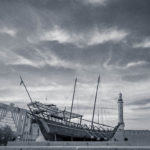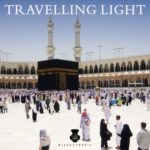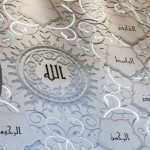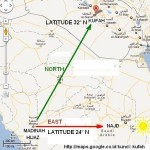-
On Top of Europe: Walking the Alps
By Sh. Abdal Hakim Murad
Categories : British Muslim Heritage
Getting away from the rat-race and enjoying the natural beauties of Europe seems to get harder by the minute. Especially in overcrowded Britain, savouring real fresh air and the God-made marvels of nature can sometimes appear no more than a hopeless and nostalgic fantasy. The Peak District, Snowdonia, Exmoor, even the Western Isles, are nowadays crawling with lolly-licking tourists and trippers, all availing themselves of the motor age in order to “get away from it all”.
Those who crave solitude and silence are perhaps a minority in today’s ant heap society. But the Holy Quran is full of advice to “travel in the earth”, to look at nature and to learn from Allah’s signs therein. The human soul is keyed to the natural world – responding even to the sound of birds and the rustling of trees – and tragically our modern lifestyle increasingly shuts out this subtle but necessary way of nurturing the spirit.
Living as we do in a united Europe, there is no reason why we should not look beyond the cliffs of Dover to the wilder places that still lurk in Europe’s less populated parts. The beaches are out of bounds for us, littered as they are with millions of holidaymakers grilling like sausages under the sun. The lowlands have been tamed and sterilised: killed off with agrichemicals and shaved of their ancient hedgerows and coppices. But in the mountains, there still exist a few odd corners where it is possible to draw breath, and escape from the madding crowd.
I have made many trips to the Alps. This huge area, stretching a thousand miles from Slovenia to France, is big enough to swallow thousands of holiday hikers without a trace. Although a popular destination in winter, when its slopes fill with the hiss and squeals of skiers, during the summer it can be wonderfully empty. No better place, in fact, for switching off the worry-circuits of the mind, and plugging in the batteries of the spirit for a much-needed recharge.
Leisure mountaineering in the classic style, with ropes and pitons, is perhaps a little dubious in Islam. Plenty of people fall off and get killed; and to die in pursuit of relaxation or the prestige of “conquering” a peak is not exactly a Club Class ticket to Paradise. But the Alps offer other, safer pleasures, and by far the most accessible of these is the randonee – the long-distance walk. These mountains are criss-crossed by dozens of well-marked footpaths, some hugging the valleys, others rising to quite alarming heights, which provide a healthy, inexpensive, and Islamically very acceptable way of spending a summer holiday.
My favourite long-distance footpath, or sentier de grande randonee, is the Tour du Mont Blanc, known colloquially as the TMB. At 4700 metres Mont Blanc itself is the highest mountain in Western Europe, and the association of the TMB with this dizzying summit might suggest that the route is difficult and perilous. In fact, it is not hazardous at all, or even particularly strenuous. It is simply a footpath which circles the great mountain at a respectful distance, passing through the corners of France, Switzerland and Italy, making a total distance of 129 miles.
Walkers can join the Tour at any point, but the easiest place to start is Chamonix, a French town which can be reached by an overnight bus from Victoria Coach Station. You can also get there by rail, changing at St Gervais onto the little narrow-gauge train that chugs up the Chamonix valley. You can fly to Geneva, stopping off to inspect the impressive new mosque at Petit-Saconnex, and take a bus onwards (about 3 hours). Or, obviously, you can drive.
Budget travellers will not want to dally in pricey Chamonix; not that there’s much to see here anyway. It will be enough to grab free maps and lists of campsites from the syndicat d’initiative (tourist office) near the coach stop, pick up the daily weather report, and then tour the local shops to buy those packets of pasta you forgot to acquire at Tescos.
There are of course hotels in Chamonix; but in fine weather it seems crazy to put a wall between yourself and the fresh air, even if you’ve got the money. Head down the valley towards Les Bossons, and you will observe signs pointing to several campsites of assorted standards. You should find a decent spot for ten euros a night, maximum.
Squeezing into that sleeping bag right after isha, and getting up for fajr at the beginning of its time, are the keys to successful mountain walking. It is only the diminishing sun which limits the sport at the end of the season: I have walked the route in October, when the weather has the advantage of being more predictable, but the early sunsets severely truncate the walking day.
Having made sure that the campsite attendant was paid the previous night (he is unlikely to relish being woken at 5 AM), and after enjoying your last hot shower for perhaps two weeks, you should set off in the direction of Les Houches. After a couple of hours you will see painted on a rock the colour code for the TMB: a sandwich of white and red stripes. Turn left here, and follow the route as far as the Col de Voza.
This col is only 1653 metres above sea-level, but once you’re here, you will get your first decent view of the Chamonix valley. On the opposite side is the ridge from which, all being well, you will descend in triumph when finishing the Tour. On the right hand side of the valley, you will be able to admire the splendid peak of the Aiguille Verte rising in the further distance. Nearer at hand is the Aiguille du Midi (3795 m), capped by Europe’s highest cable-car station. It is actually possible to travel by cable-car from Chamonix all the way to Courmayeur in Italy: don’t forget to take your passport! The trip is said to be breathtaking as you skim slowly over the Glacier du Géant, but apparently costs as much as a hundred euros.
If you leave Voza after an early lunch, you should have plenty of time to admire the stunning Bionassay Glacier. The path passes over the stream issuing from the lip of the glacier; but later in the day as it climbs relentlessly you will enjoy increasingly impressive views. The TMB never involves actually crossing a glacier, but if you are minded to try this anyway, never do so unless you are properly roped together and in the charge of someone experienced. Cracks and crevasses can be covered in snow or thin ice bridges, and avoiding them is a real knack. Remember, if you are trapped near the top of one of these glaciers, your frozen body will not be disgorged at the bottom for several hundred years! But glacial pleasures are to be had very safely by going up close nearby, and watching as the ice grinds by at the leisurely rate of about three inches a day. The cracking and growling noise made by the frozen river can be annoying after a while, so if you are a light sleeper you are advised to keep your distance when locating a campsite.
By late afternoon you should be in the charming Alpine village of Contamines. There are a few shops here, and it is wise to stock up well, as you will be passing no other shops for several days.
The following day’s walk will take you as far as the refuge of Croix du Bonhomme. Even if you have tents, it is a good idea to sample at least one traditional Alpine refuge. For a tiny fee, usually left in an envelope on the morning of departure, you will be admitted to a warm room crammed with wooden bunks and blankets. Some of the more popular refuges provide coffee in the morning, and even meals; but these are generally regarded with disdain by the French. One of the most characteristic sights of the TMB is that of French walkers opening their gigantic rucksacks, and pulling out saucepans, stoves and the ingredients to create a five-course meal. The stream outside is typically used to cool wine bottles, carried for days on sweating backs simply for the sake of this gastronomic moment.
Much more sensible, anyway, to gulp down a stale sandwich, and go out, camera in hand, looking for wildlife. There is plenty of it about: marmots (rather like beavers), whose squeaks are the signature-tune of the French Alps; and the large elk-like bouctin, to be observed chewing the cud placidly on the higher slopes. Plenty of flowers about too, including the endangered eidelweiss. Remember that it is strictly forbidden to pick these.
Three days later you should arrive in the Italian resort town of Courmayeur. It is worth making a detour here to explore a cable-car route which will carry you up to the famous Torino refuge at 3322 metres. You could walk it instead, but don’t – it’s heartstoppingly dangerous and the altitude can do odd things to your sense of balance and your stamina. At the Torino, dazzled by views in all directions, you might want to spend the night and enjoy the astonishing sunrise the following morning. Son et lumiere with no entrance fee!
Back on the TMB, two days of easy walking will bring you to the Swiss border at Col Ferret (2537m). From here you will wander through less scenic country, spangled with flowers, wild strawberries and myrtles, to Champex, a small lakeside resort. Past Forclaz on the French side of the border there is a side footpath which leads up to the famous climbers’ refuge at Albert Premier (2702m), and if you have the time you should definitely sample this detour. If you overnight here, remember to sleep in the correct section, as each block of bunks is woken at a particular time in the morning by the guardian, starting at 3 AM!
The TMB continues north of the village of Argentiere and winds back to the Chamonix area at Planpraz. There is a lot of forestry work on these slopes, and you will be interested to discover that many of the lumberjacks are Muslims! These North Africans are usually overjoyed to meet fellow-Muslims among the hikers, and will invite you to share a glass of tea (or, sadly, something a little stronger … ).
Forestry work seems to attract Muslim labour in France, perhaps because of the chronic racism and Islamophobia in the cities. In the southerly parts of the country, the National Front regularly scoops almost half of the vote, and violence against Muslims and mosques is common. However, there is little trace of such crusading attitudes in the mountains, for some reason. You may encounter hostile remarks from a few other walkers, who can be silenced by the simple expedient of throwing them into the nearest lake; but it is rarely a major problem.
It is worth remembering that according to a number of hadiths, prayers are more likely to be accepted if said on a mountain! It is not hard to realise why. Using your Silva compass to determine the direction of Makka in some particularly awkward valley, and trying to melt some ice for wudu-water while the rain discovers the cracks in your anorak, may involve you in slight discomfort; but the privilege of prayer amidst the grandeur of the mountains is a memorable one. The whole earth has been made a mosque for the Muslims, a hadith tells us. If we don’t use the Alps properly, who else will?
© Abdal-Hakim Murad, 2003





